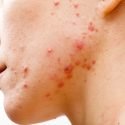How to Get Rid of a Knot in Your Back
Do you ever get a sharp ache after an intense workout in your neck, shoulders, or upper back?
It may be hard to move your shoulders without experiencing pain.
It may be impossible for you to complete your workout.
You might be subject to the pain that will continue for an extended period of time.
If you regularly work out and feel a persistent stinging pain in your muscle, the issue may be muscle knots.
What are Muscle Knots
Muscle knots are places in your muscle where contracted fibers are not able to relax.
These knots are a typical problem for active people.
They are medically called Myofascial Trigger Points, and they feel like small knots to your fingertips.
The knots can be different in size. In small muscles, they may be as small as a pinhead.
They may be as large as a thumb in larger muscles. These knots may cause you pain in two different ways.
Some knots only hurt when you press down on them.
Others, called active trigger points, may cause you pain even when pressure is not applied.
Trigger points which are in a constant state of tightening end up sending pain signals to the brain.
The brain, in turn, commands the muscle to rest. This leads to a lack of activity in the muscle.
This makes the muscle shrink and contract.
What Causes these Knots
There are three common causes of these knots:
1) Accidents – Severe trauma, such as serious falls and sports injuries that strain your joints and muscles.
2) Stress from Poor Posture – This can happen from sitting for long periods of time with poor posture. It can also happen from sitting with no support and lifting weight improperly.
3) Overstimulation – This can happen from strenuous exercise and sports activities. This is particularly the case of lifting weights.
If you get knots in back, shoulders, or neck muscles from lifting weights, then the likely culprit is poor posture.
For example, if your shoulders are rounded from sitting in your office, your back muscles are already stretched out of position because your shoulders are rounded forwards.
When you do exercise, your muscles will be stretched even more.
This over-stretching when combined with intense contractions, may overstimulate your muscles, causing knots to form.
How do You Treat Muscle Knots
If you want to know how to get rid of knots in back, shoulder, or neck muscles, follow the following instructions.
You can treat the problem yourself using a massage ball, tennis ball, or lacrosse ball.
To treat a knot, roll the ball against the muscle by placing the ball on the floor or against a wall for support.
You can use two tennis balls or massage balls in a sock.
The best way to perform this therapy is with a RAD roller. A RAD roller conforms more to the tissue.
Therefore, it is more similar to the therapist’s hands.
What is important to note is that the pain that you feel may not be located at the root of the pain.
You may need to massage several areas before you actually find the knot itself.
For this purpose, you may want to use a foam roller.
A foam roller will cause your muscle fibers to loosen up, allowing blood flow to resume normally in the area again.
Another alternative to treating your knot is a deep massage directly applied to the knot.
Here are some guidelines for applying a massage to the knot:
- Use a tool instead of your hands.
- Use a deep stroking massage, not uniform pressure.
- Use a slow massage stroke.
- Use six to twelve strokes for each knot.
- Massage each knot two to three times a day until the pain subsides.
How to Avoid the Knots
Stretching
It is a good idea to stretch before doing any strenuous activity.
Many minor muscle injuries can be prevented if you are careful about preparing for your workouts.
Cooling down and stretching after doing your exercises helps to ease muscle stiffness often associated with the knots.
Improve Your Posture
It is not good to sit for too long in one position.
If you sit so that you don’t strain your muscles and you don’t cut off your blood flow, this will help prevent knots and cramps.
Keep your head up if you need to sit for an extended time period.
Make it a habit of rising and walking around every 30 minutes to an hour.
Keep Your Muscles Strong and Toned
Knots and muscle spasms are often associated with some kind of extreme physical exertion.
You need to avoid overdoing it, and you need to slowly work up to higher levels of physical performance.
A good idea is to start workouts gradually. Slowly work up to more strenuous exercises.
If you don’t do this, you will end up with more cramps and knots than before you started.
Stress Relief
Knots are associated with tense, hard spots in the back.
Having a stressful day at the keyboard might end up as a sore spot on your back.
Stress can subtract years from your life and make your life miserable.
Stress-relieving activities can help get rid of the knots.
Try a hot bath, yoga, or meditation.
Nutrition
Knots and spasms can be caused by low mineral levels in the diet.
Consider increasing your intake of calcium and potassium.
You can get these minerals from fruits and vegetables.
You can also take a multivitamin. Dehydration has also been linked to muscle pain and cramping.
Always make sure that you are well hydrated.
Conclusion
We have discussed what is a knot in your muscle, what causes knots, and various methods to treat and prevent them.
The best preventive remedy for any kind of problem that you may have with your body is to remain in great shape and control your levels of stress.
If you have a problem with knots that don’t seem to go away despite your best efforts, you should consult with your doctor and a good massage therapist.
FDA Compliance
The information on this website has not been evaluated by the Food & Drug Administration or any other medical body. We do not aim to diagnose, treat, cure or prevent any illness or disease. Information is shared for educational purposes only. You must consult your doctor before acting on any content on this website, especially if you are pregnant, nursing, taking medication, or have a medical condition.
HOW WOULD YOU RATE THIS ARTICLE?







What tools for massaging knots are you writing about?
Thanks!
How do you think, can yoga help prevent knots?
Very detailed stuff. I was suffering with backbone pain 3 months before. I am allergenic to medicines so last option was home treatments and remedies. You have shared very good information here. Check some home remedies for backbone pain here. I hope it will helpful for many of others.